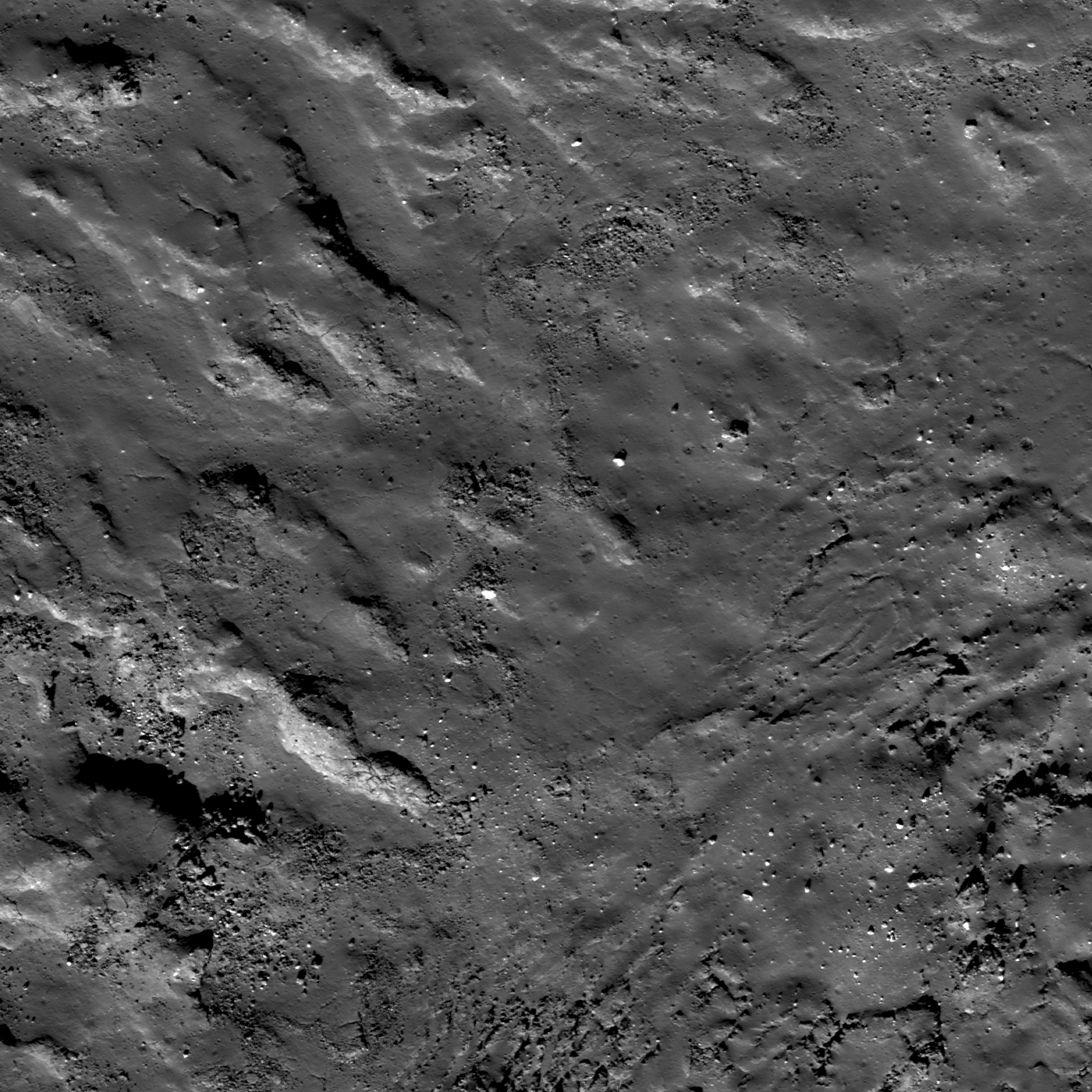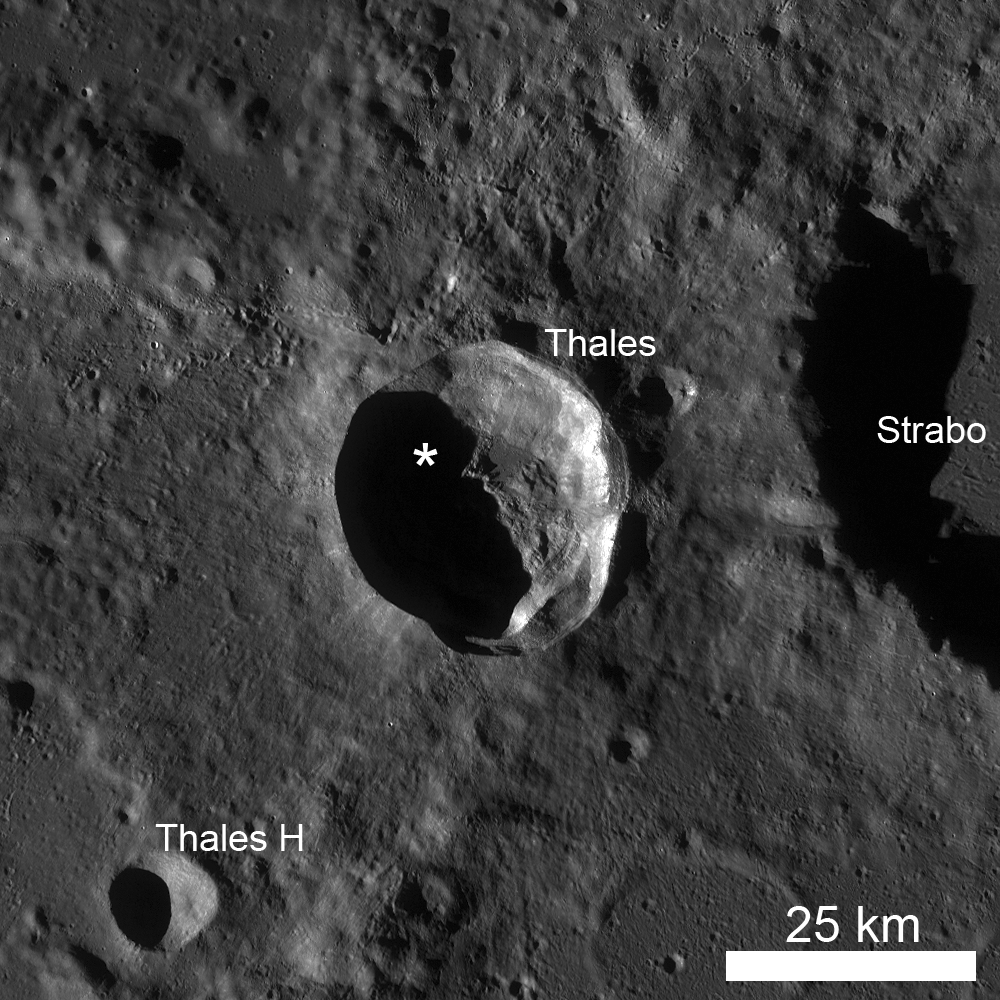
Many Copernican- and Eratosthenian-aged craters have substantial impact melt deposits within and surrounding them. Like so many other craters on the Moon, Thales crater (61.732°N, 50.284°E, ~31 km diameter) is remarkable in the diversity of geologic features observed in LROC NAC and WAC images. In the opening image, channelized impact melt flowed toward the crater floor from high up on the crater wall. The contact at which crater floor and wall meet is less distinct, but the change from channelized impact melt to fractured impact melt is representative of this boundary. Tomorrow's Featured Image will explore why impact melt may fracture a specific way, but suffice to say, the morphology of the impact melt in today's Featured Image is spectacular!
It is likely that impact melt channels formed in the crater walls as hot impact melt flowed from higher elevation toward the crater floor, using pre-existing weaknesses and cracks in the target rocks created by the violent impact event. As more impact melt flowed downhill, these channels may have grown larger. On average, these channels are between ~25 - 40 m across. Some channels appear shallower than others, which may suggest that more melt flowed down the deeper channels, carving more material from them. Or, perhaps the impact melt cooled and solidified in the shallower channels prior to reaching the crater floor, thus explaining the apparent channel depth differences across this small region of the crater wall. Comparatively, the fractures in the impact melt on the crater floor represent the relief of stress during cooling as the melt solidified near the crater floor-crater wall contact. These fractures may have been caused by the impact melt "sticking" to the lowermost portion of the crater wall as it cooled, similar to a mixture of cornstarch and water drying out.
Why don't you go for an adventure on the floor of Thales crater and discover the amazing impact melt morphologies visible in the full LROC NAC frame?
Related Posts:
Channelized impact melt
Fractured impact melt
Published by Lillian Ostrach on 31 January 2012
